How to make cities more “water-sensitive”
What can help cities become more attuned, and alert, to addressing all the influences on sustaining their long-term water supply? How can stakeholders, especially multiple state agencies, collaborate more to manage water better? Here are some answers from Tony Wong, who pioneered the Water Sensitive Cities approach that seeks to concurrently address social, environmental, and economic challenges of traditional urban water management.

Dr Tony Wong,
Professor of Sustainable Development at Monash University’s Sustainable Development Institute, is also a civil engineer who helped develop Singapore’s Active, Beautiful, Clean (ABC) Waters programme.
Q: You pioneered the Water Sensitive Cities approach. What does this approach entail, and how has it been a shift from traditional approaches to water management and dealing with climate issues such as sea level rise and flooding?
A: The Water Sensitive Cities approach is a transformative socio-technical model designed to address the social, environmental, and economic challenges within conventional urban water systems.
My work in leading the research and development of Water Sensitive Urban Design began in the early 1990s, with research that applied biomimicry to emulate wetland ecosystems and integrate nature-based solutions in urban landscapes. These early efforts established a foundation of combining scientific rigour with innovative design, aiming to tackle growing urban water issues. This foundation laid the groundwork for the origins of the Water Sensitive Cities approach, outlined in a two-part paper published in 2009.
The first part introduced a heuristic framework for urban water transitions, charting the historical evolution of “hydro-social contracts,” influenced by shifting cultural values and relationships between government and communities. This framework helped in guiding urban water policy and infrastructure investment. We envisioned the “water-sensitive city" as an aspirational forward-looking model for urban water management. It also emphasised a transdisciplinary approach needed to address the complex, multi-dimensional challenges faced by cities.
The second paper established three core principles of water-sensitive practice, sparking global transdisciplinary research and inspiring water-sensitive strategies worldwide.
The three principles are:
- Cities as water supply catchments: Water management should consider cities as catchments, where diverse water sources are harnessed both from within and outside city boundaries, reducing reliance on distant resources.
- Cities providing ecosystem services: Cities should be designed with ecological functions embedded in the landscape and built environment, to enhance resilience against climate impacts, and increase urban natural capital. Ecosystem services such as water cleansing, flood management, urban cooling, habitat provision, and conservation become integral to urban planning, and support the health of urban and nearby natural environments.
- Cities comprising water-sensitive communities: Community values and aspirations should shape urban design and water management, building a city supported by social and institutional capital. This includes (i) communities living sustainably and balancing resource consumption with conservation; (ii) industry and professionals capable of adapting and innovating in urban development; and (iii) policies that promote the adaptive evolution of water-sensitive urban systems.
Over time, these principles have proven adaptable across diverse socio-economic, institutional, and environmental contexts, influencing strategic action for climate resilience and the United Nations Agenda 2030 Sustainable Development Goals. Climate resilience efforts such as addressing sea-level rise and urban flooding require not only engineering solutions but also a broader water-sensitive perspective.
In coastal protection, for instance, strategies might include enhancing stormwater capture, safeguarding groundwater from saline intrusion (cities as water supply catchments), and envisioning drainage systems as ecological landscapes that provide ecosystem services (cities providing ecosystem services). Additionally, fostering social resilience is critical for adaptive infrastructure planning, allowing cities to delay certain infrastructure investments while still maintaining high resilience and adaptability to climate change impacts (cities comprising water-sensitive communities).
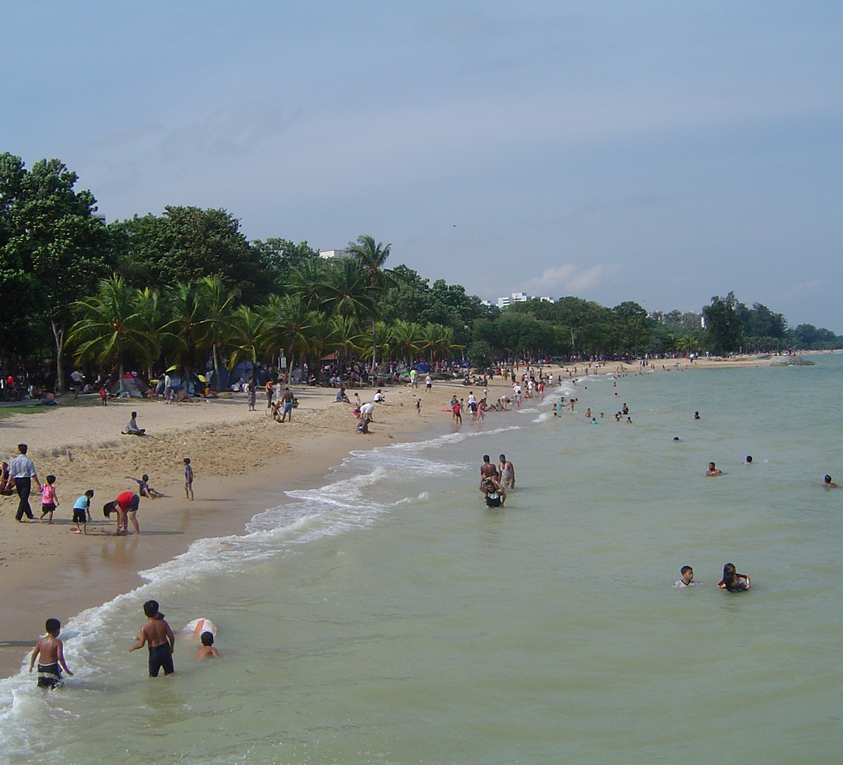
Q: You have been instrumental in establishing Singapore’s Active, Beautiful, Clean (ABC) Waters programme, officially launched in 2006 to meet recreational needs and enhance the living environment while improving water quality. What were the challenges in bringing in a new framework for nature-based solutions to address water-related issues to Singapore?
A: Singapore has already established a robust, integrated framework for water supply security, effectively embodying the "city as a water supply catchment" principle when I got involved in the ABC Waters programme. With stormwater as the fourth component of its "Four National Taps" water strategy, Singapore recognises stormwater as a valuable resource. I contributed to operationalising the ABC Waters programme as a government policy, developing a strategic framework to integrate ecological landscapes into Singapore’s urban design.
This approach enables ecosystem services, primarily urban stormwater cleansing, to enhance stormwater’s value as a critical resource, that is “cities providing ecosystem services”. Supporting this policy shift involved the development of demonstration projects, a dedicated research programme, design guidelines, a training curriculum, and the accreditation of ABC Waters Practitioners, fostering a "city comprising water-sensitive communities."
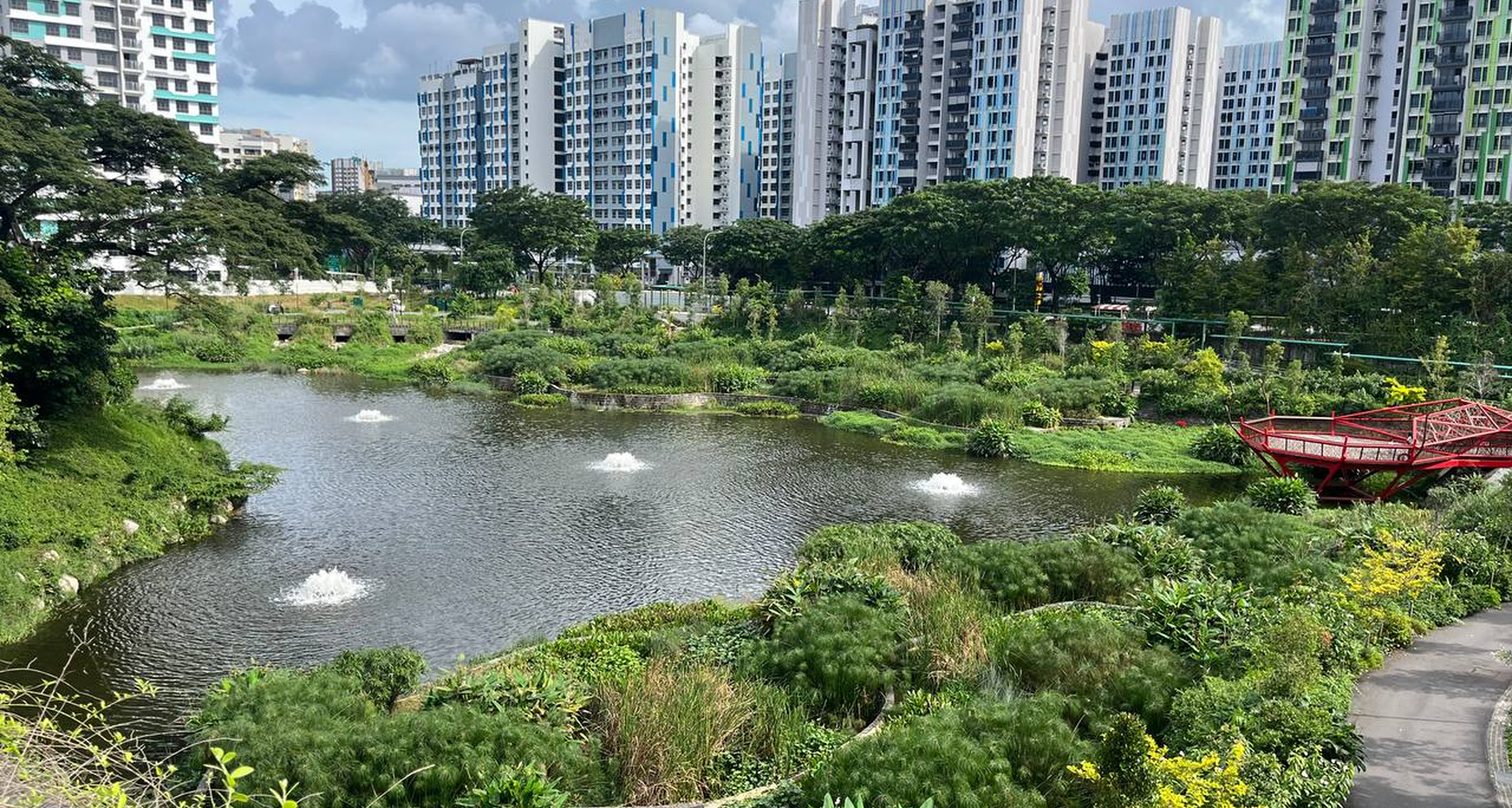
One of the primary challenges during my work on the ABC Waters programme was persuading practitioners and various government agencies of the benefits of this integrated approach, and clarifying their roles in enabling transformative urban water management.
In Singapore, numerous ministerial portfolios influence the built environment, with policies and standards that directly affect stormwater management. Agencies such as the Land Transport Authority, Housing & Development Board (HDB), PUB, National Parks Board, and Urban Redevelopment Authority, to name a few, all have stakes in the city’s infrastructure. There was intense competition for, and jurisdictional demarcation of, space in Singapore’s high-density environment. Traditionally, co-investment in multifunctional infrastructure across these agencies was uncommon.
However, early ABC Waters demonstration projects illustrated the potential of multi-agency co-investment to deliver multiple benefits, paving the way for more collaborative and multifunctional urban water management solutions.
ACTIVE, BEAUTIFUL, CLEAN (ABC) WATERS
Active, Beautiful, Clean (ABC) Waters aims to transform infrastructure like reservoirs, canals, and storm water drains so that can fulfill their primary functions like flood mitigation more effectively whilst also creating more recreational spaces for the public and habitats for biodiversity. A well-known ABC Waters project is Bishan-Ang Mo Kio Park where Singapore converted a wide, straight concrete canal into a meandering river with wetlands along its bank.
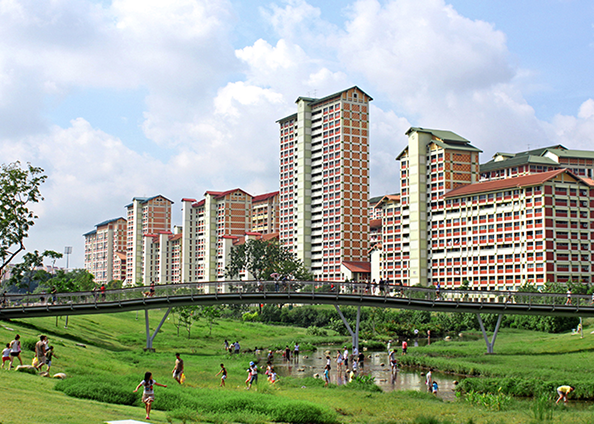
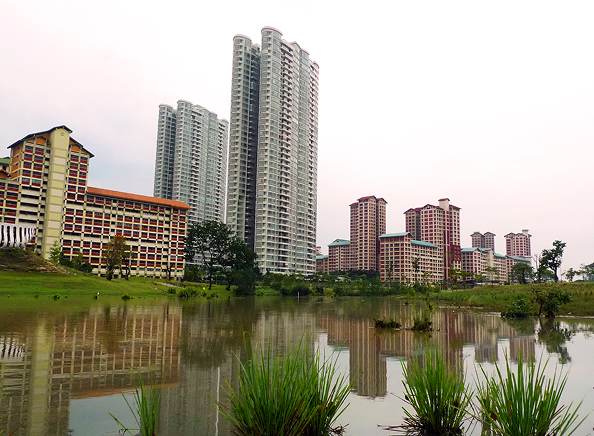
Q: Observing how the ABC Waters programme has developed since then, where have you been encouraged in the direction it has taken, and how do you think it can go further?
A: On a recent visit to the Balam Estate demonstration project, I was pleased to see the infrastructure well-maintained, showcasing the success of the ABC Waters approach in practice. I also toured several HDB projects where ABC Waters initiatives are integrated as a matter of policy, a promising sign that these sustainable water management practices are becoming mainstream. However, there remain ongoing challenges in sustaining buy-in from other agencies. The ABC Waters team within PUB is much smaller than it once was, and aside from HDB, other agencies have not fully embraced the leadership role required to mainstream these initiatives.
Looking ahead, Singapore’s climate action efforts—particularly around coastal protection and flood management—may bring about a resurgence of the ABC Waters principles in urban planning and design. As the city-state progresses toward a polder model along its coastal areas, stormwater management will need to be reimagined, with many concepts from ABC Waters potentially informing these new approaches. The revival of ABC Waters concepts could support Singapore in building climate resilience while maintaining sustainable water management.
"Singapore’s climate action efforts—particularly around coastal protection and flood management—may bring about a resurgence of the ABC Waters principles in urban planning and design"
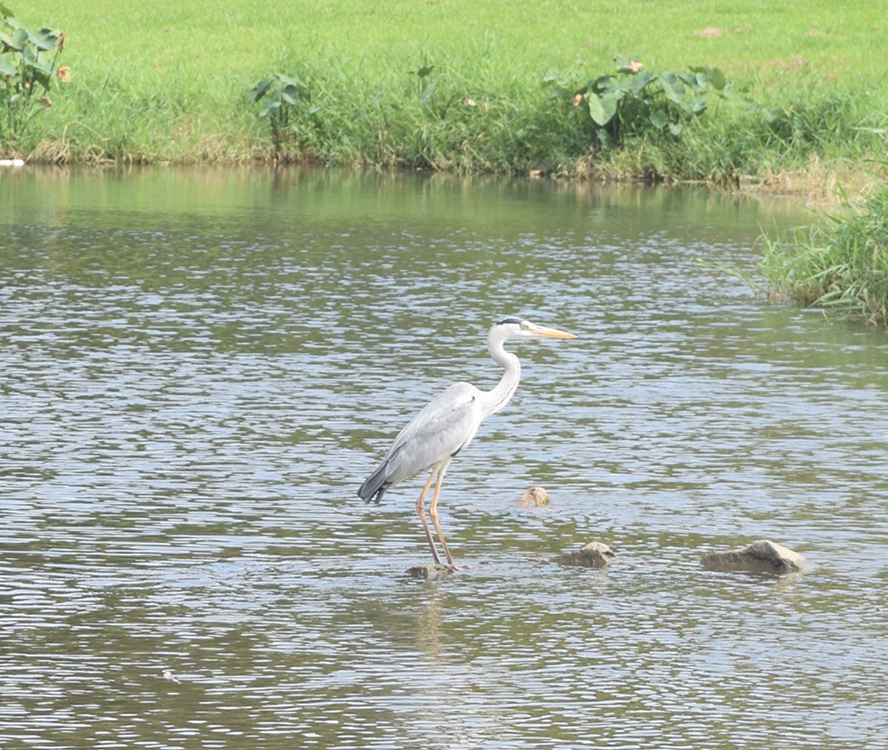
Q: You are the founding co-director of Monash University’s Centre for Water Sensitive Cities, which is translating interdisciplinary research into practical tools and guidelines. Interdisciplinarity is hard to achieve, a meeting of minds that may speak different lingos and have different assumptions. How has the Centre managed this challenge?
I co-founded Monash University’s Centre for Water Sensitive Cities in 2010. In 2012, the Centre played a pivotal role in securing and establishing the Cooperative Research Centre for Water Sensitive Cities (CRC) through a $120 million investment from the Australian government and industry partners, which I led as CEO. The CRC provided an integrative research platform across 13 disciplines in both arts and humanities as well as science and technology fields, and involved over 80 government and industry partners to synthesise, integrate, and develop research adoption pathways across multiple industry sectors.
When the CRC concluded in 2021, Monash launched Water Sensitive Cities Australia. At that point, I directed my focus on expanding the water-sensitive cities approach to developing countries. I joined Monash’s Faculty of Art, Design, and Architecture, where I established the Urban Transformation Hubs and a network spanning Monash’s international campuses in Indonesia, Malaysia, China, and India.
Reflecting on my experience leading Monash’s Centre for Water Sensitive Cities and then the CRC, I recognise that interdisciplinary research, while essential for addressing today’s complex, “wicked” problems, remains a niche pursuit and is not suited to everyone. While it doesn’t require everyone’s involvement to succeed, interdisciplinary work does have a high transaction cost, as researchers from specific disciplines invest significant time in adapting to a collaborative, interdisciplinary culture. If not well-managed, these demands can even impede career progression, particularly for early-career researchers.
To address this challenge, I found it most effective to engage a cohort of established senior research leaders who each lead a strong team of early-career researchers and PhD students within their disciplines. These senior researchers serve as conduits, channelling insights from their teams into interdisciplinary environments where transdisciplinary research synthesis occurs to address specific real-world issues. Research questions that arise from this synthesis then inform discipline-specific projects, allowing younger researchers and PhD students to maintain disciplinary depth and excellence, while contributing to broader interdisciplinary outcomes.
Q: Bridging the gap between theory and practice on water-sensitive cities is difficult. How has the Monash Centre managed this?
A: Bridging the gap between theory and practice is crucial for achieving real-world impact in urban sustainability and resilience. In my current efforts to advance impactful interdisciplinary research in the developing world, I encounter intensified challenges—not only in facilitating interdisciplinary collaboration but also in adapting research output to local, third-world contexts that often differ markedly from the original research environments. This demands a heightened level of synthesis and adaptation.
Monash’s Urban Transformation Hub is addressing this need by adopting a “living laboratory” approach, which promotes an iterative process of socio-technical adaptation and innovation. This model focuses on pilot-scale experimentation, impact evaluation, and continuous learning to enhance our knowledge base and strengthen research excellence.
The goal is to address critical knowledge gaps that hinder the effective translation of climate policy and adaptation science into practice in developing countries. Through this living lab approach, we aim to drive practical, scalable solutions that are directly applicable to the unique challenges of urban resilience in the developing world.
Q: You are currently involved in research on informal settlements in Indonesia and Fiji. What is it about, and how is this research important for sustainable development for informal settlements?
A: Our work in revitalising informal settlements marks the first major adaptation of the water-sensitive cities approach for the developing world. Over a billion people live in informal settlements, a number predicted to triple by 2050, with the largest concentration of approximately 370 million in East and Southeast Asia.
These communities often occupy contaminated, flood-prone, and severely degraded environments lacking essential infrastructure like clean water and sanitation. As a result, they endure some of the harshest living conditions, bearing the brunt of climate change impacts, and suffering from chronic health issues due to consistent exposure to sewage-contaminated surroundings. Diarrhoea, child stunting, and impaired cognitive development are some of the most prevalent health impacts.
To address these challenges, we have developed a sociotechnical approach that includes comprehensive site assessments and community co-design processes to create integrated, neighbourhood-scale water-sensitive sanitation, water management, access pathways, and clean water upgrades. This approach addresses the full spectrum of challenges in these settlements holistically. The transformation is cost-effective and achieved through an integration of "green, grey, and smart" infrastructure, alongside a governance framework that promotes sustainable, system-level change. This framework actively involves communities, governments, utilities, civil society, and industry partners, allowing us to overcome complex issues around resettlement, relocation, and tenure that have historically hindered similar efforts.
Our pilot programme, RISE (Revitalising Informal Settlements and their Environments), has demonstrated the effectiveness, feasibility, and wide-ranging co-benefits of this approach through full-scale upgrades in six slum settlements in Makassar, Indonesia. These projects serve as proof-of-concept for sustainable settlement transformation that improves health, resilience, and quality of life for some of the most vulnerable populations in the world.
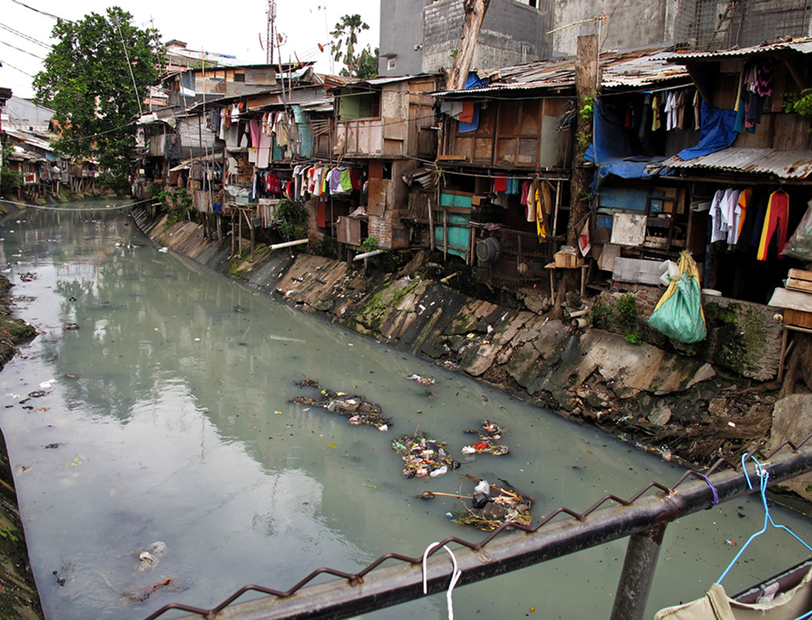
Q: Where do you think the future of research and practice on water-sensitive cities lies? What questions need to be further looked into, and what tools further developed?
A: Cities function as complex systems with deeply interconnected elements, where urban water management is inseparably linked to broader challenges such as liveability and environmental sustainability. Water, as a fundamental enabler, can drive integrated solutions that extend well beyond conventional water resource management. Indeed, a water-sensitive approach directly, or indirectly, impacts nearly half of the 169 targets of the Sustainable Development Goals. The water sector has a pivotal leadership role in climate adaptation and associated infrastructure planning and, where feasible, climate mitigation.
Achieving water-sensitive cities requires a holistic view, beyond that of water management. Specific attention is needed to the intersections between water and other critical urban sectors. Integration across these areas can be facilitated through a blend of traditional infrastructure with flexible, decentralised, nature-based, and socio-technical solutions, creating what we term "hybrid systems."
To support this integration, governments, industries, and communities need to develop new technological and operational capacities for planning, delivering, and evaluating infrastructure that maximises community value across sectors and scales. Specifically, we require new hybrid technological systems operating at the nexus of water, energy, food, and waste resources, with connections to transport networks and other aspects of the built environment. A cornerstone for operationalising these hybrid systems will be smart infrastructure capabilities, leveraging the Internet of Things to provide accurate, real-time, system-wide data. This capability will enhance our ability to manage hybrid systems dynamically and to monitor the resulting benefits for both people and nature, fostering resilient and sustainable urban environments.

